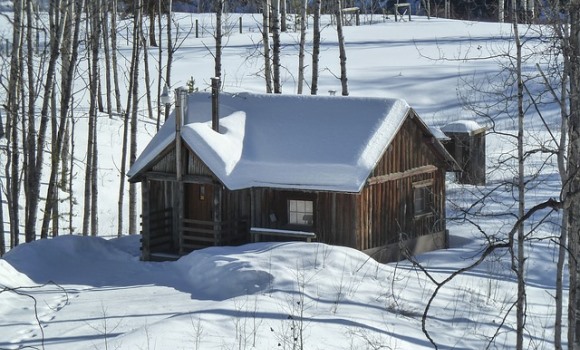Insulating your home is an eco-friendly thing to do in itself. But using eco-friendly insulation materials makes it double-green! Here are some tips on how to insulate your home for winter in an environmentally-conscious way.
Green Materials
Many of us think of insulation as the pink, fiberglass stuff that comes in rolls. Thankfully, there are greener options.
Sand
Extremely abundant and renewable, sand is one of the latest green insulation materials. A company called EcoBatt (www.ecobatt.us) specializes in sand insulation. They add recycled glass bottles to natural sand to make a particular kind of insulation. It does not have formaldehyde, phenols, or artificial colors.
Denim
Now there’s a new use for old jeans. Some manufacturers collect used jeans and make them into insulation. The cotton fibers are said to be as effective as fiberglass, but without the health hazards.
Straw Bales
If you have images of straw insulation catching fire, think again. When it’s used as insulation, straw is bound into extremely tight bales and covered with plaster. It’s a very eco-friendly option, as it makes use of straw that would normally be discarded.
Wool
This naturally fire-resistant material makes good insulation, as anyone who has snuggled under a wool blanket knows. It is naturally flame- and water-resistant.
Cork
Used wine corks made from natural cork can be made into insulation. Lightweight and durable, cork is a good insulating material. Its effect is similar to conventional foam panel insulation. Re-using corks in this way helps reduce the need for new cork to be harvested.
Cellulose
Finely-shredded newspaper is the basis for this eco-friendly insulation. It can be blown into cracks, crevices, and walls. It also comes in solid pads and boards.
Spray Foam
Believe it or not, there is such a thing as eco-friendly spray foam insulation. They are water-based sprays that combine water with carbon dioxide or magnesium dioxide with compressed air.
Newspaper
You can insulate your water pipes with newspaper and duct tape. Insulating your water pipes protects them against freezing, and reduces the amount of energy needed to heat the water.
Bubble Wrap
You can also insulate your water pipes with bubble wrap. Used bubble wrap can also be used to wrap your water heater, holding in heat and reducing energy use.
Making use of these green materials and finding a use for recyclables in your own home are great ways to insulate your home in an eco-friendly way.






